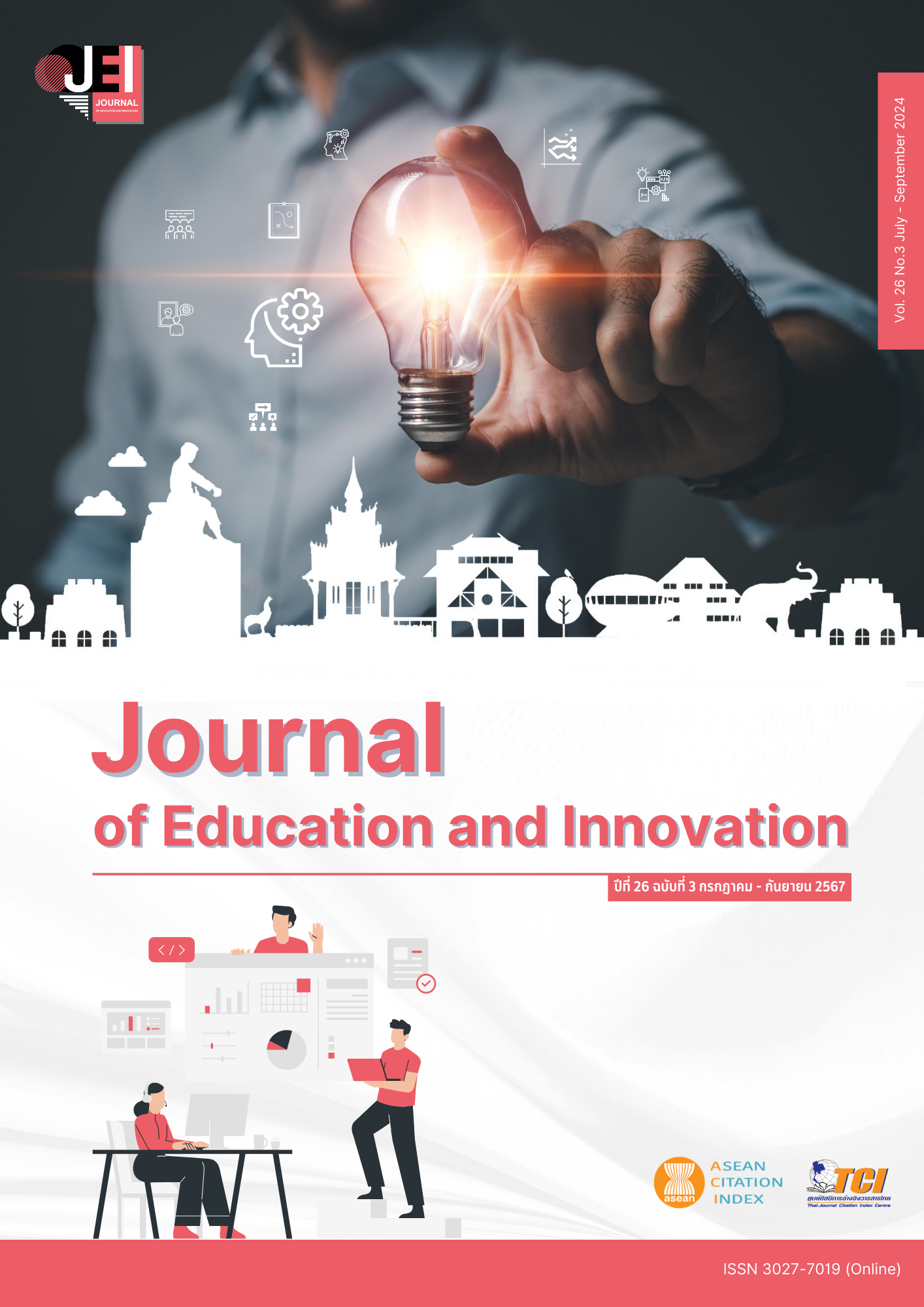IMPROVING 11 GRADE STUDENTS’ SCIENTIFIC EXPLANATION IN RELATIONSHIPS AMONG VOLUME, PRESSURE, TEMPERATURE, AND AMOUNT OF GAS THROUGH THINKING FRAME APPROACH
Main Article Content
Abstract
A scientific explanation of phenomena should show the causes and mechanisms that occur, along with the identification of the causal relationships and interactions under which the phenomenon happens through description, interpretation, and causal mechanism. The thinking frame approach is one of the instructional strategies designed to support the written scientific explanation. The purpose of this research was to investigate and compare students' scientific explanations of the relationship between volume, pressure, temperature, and amount of gas learned through the thinking frame approach. Participants were 28 grade 11 students. The scientific explanation test was administered to them before and after implementation of the thinking frame approach and a semi-structured interview after learning. A statistical method, paired samples t-test, was also employed to process students' scientific explanations in the pre- and post-tests. The results revealed that the vast majority of students , 40.18%, wrote their scientific explanations at the non-explanation level in the pre-test. Students often express alternative conceptions to explain the relationship among volume, pressure, and temperature of gas. However, after learning with the thinking frame approach, it was found that most students, 33.03%, improved their written scientific explanation at the associative explanation level and the complex explanation level. Students applied scientific theory to illustrate phenomena and imagine gas changes that cannot be seen with the naked eye, then used them to identify the occurring causes and mechanisms. In addition, the statistical analysis indicated that there was an improvement of students' scientific explanation in the pre- and the post-test significantly at the 0.05 level. Those results suggest that the thinking frame approach can help students explain the causal and mechanism of the phenomenon involving gas properties to be more rationale.
Article Details

This work is licensed under a Creative Commons Attribution-NonCommercial-NoDerivatives 4.0 International License.
The owner of the article does not copy or violate any of its copyright. If any copyright infringement occurs or prosecution, in any case, the Editorial Board is not involved in all the rights to the owner of the article to be performed.
References
Chang, J., Park, J., Tang, K. S., Treagust, D. F., & Won, M. (2020). The features of norms formed in constructing student-generated drawings to explain physics phenomena. International Journal of Science Education, 42(8), 1362-1387.
Creswell, J. W. (2013). Research design: qualitative, quantitative, and mixed methods approaches (2nd ed.). Thousand Oaks, CA: Sage publications.
de Andrade, V., Freire, S., & Baptista, M. (2019). Constructing scientific explanations: A system of analysis for students’ explanations. Research in Science Education, 49, 787–807.
Faria, C., Freire, S., Baptista, M., & Galvão, C. (2014). The construction of a reasoned explanation of a health phenomenon: An analysis of competencies mobilized. International Journal of Science Education, 36(9), 1476-1490.
Konur, K. B., & Alipaşa, A. Y. A. S. (2010). Pre-service primary teachers’ understanding level of the relationship between heat-volume-pressure in gases. Journal of Turkish Science Education, 7(3), 128-142.
McLure, F. (2020). The Thinking Frames Approach: A case study of inclusion using student-generated multiple representations. Journal of Research in Special Educational Needs, 20(1), 3–13.
McLure, F., Won, M., & Treagust, D. F. (2022). Analysis of students’ diagrams explaining scientific phenomena. Research in Science Education, 52(4), 1225-1241.
McLure, F. (2023). The Thinking Frames Approach: Improving high school students’ written explanations of phenomena in science. Research in Science Education, 53(1), 173-191.
McNeill, L. K., Lizotte, J. D., Krajcik, J., & Marx, W. R. (2006). Supporting students' construction of scientific explanations by fading scaffolds in instructional materials. The journal of the Learning Sciences, 15(2), 153- 191.
Meela, P., & Artdej, R. (2017). Model based inquiry and scientific explanation: Promoting meaning-making in classroom. Journal of Education Naresuan University, 19(3), 1-15.
Mete, P. (2020). 11th grade students’ understanding level of gases in terms of some chemical variables and the determination of alternative conceptions. Science Education International, 31(4), 334-347.
Metz, K. E. (2000). Young children's inquiry in biology: Building the knowledge bases to empower independent inquiry. In J. Minstrell and E. van Zee (Eds.) Inquiring into inquiry in science learning and teaching (pp. 371-404). Washington, DC: American Association for the Advancement of Science.
National Research Council. (2000). Inquiry and the national science education standards. Washington, DC: National Academy Press.
Newberry, M., & Gilbert, J. K. (2007). Bringing learners and scientific expertise together. In K. S.Taber (Ed.), Science education for gifted learners (pp. 197–211). London: Routledge.
OECD. (2019). PISA 2018 Assessment and Analytical Framework, PISA. Paris: OECD Publishing.
Srikulwong, S., & Ladachat, L. (2021). Using model and scientific explanation of eighth grade students. CMU Journal of Education, 5(1), 12-27.
Tang, K. S. (2016). Constructing scientific explanations through premise–reasoning–outcome (PRO): An exploratory study to scaffold students in structuring written explanations. International Journal of Science Education, 38(9), 1–26.
Windschitl, M., Thompson, J., & Braaten, M. (2008). Beyond the scientific method: model-based inquiry as a new paradigm of preference for school science investigations. Science Education, 92(5), 941–967.


